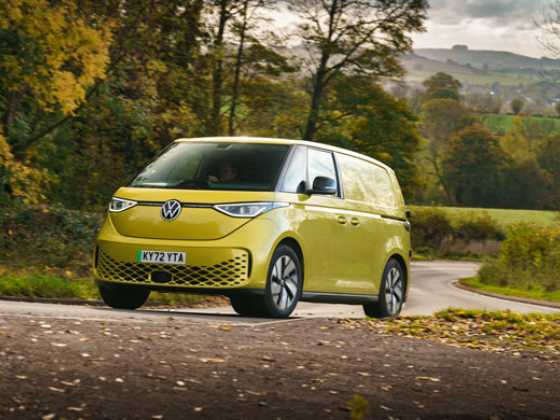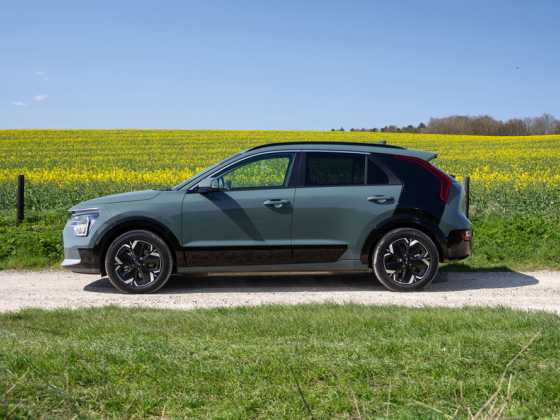Fine Fiat
Fiat Eco Bravo is a good alternative if you don’t want to spend much time filling up the tank, but Sofie Lidefjard’s romance with the car does not have a happy ending
 Fiat Bravo
Fiat Bravo
Top speed: 116 mph
0-62 mph: 11.3 sec
CO2 emissions: 119g/km
MPG (combined cycle): 62.8mpg
Do you believe in love at first sight? I recently experienced love at first drive when I was handed the keys to a Fiat Bravo 1.6 MultiJet Eco, and drove it a few hundred yards to the car park. It just felt right, like a favourite sweater; comfortable and safe, and I enjoyed those first few seconds immensely.
Unfortunately, there was no ‘happily ever after’-ending; partly because I only had the car for a week, and partly because like some love stories it was all downhill from there. During my fling I discovered that Fiat Bravo is like some men I’ve met in my life; unresponsive and noisy.
The engine, with 105 horsepower, is powerful and also equipped with a particulate filter. However, it takes a great deal of shifting gears in order to keep it at speed. Therefore, it would be good if the 6 + reverse gearbox was more flexible and supple. The 6th gear has been created to save fuel on rural roads and motorways.
Three new additions to Fiat’s 5-door mid-size Bravo range – two 1.6 MultiJet versions and an Eco option – went on sale in the UK in 2008. These versions join a buoyant Bravo line-up, which has enjoyed significant recognition since its introduction.
Euro V
In addition to revised ECU settings, the Eco version of the MultiJet employs special measures to optimise aerodynamics, incorporates low rolling resistance tyres and ‘taller’ gear ratios. The engine returns more than 62mpg in a combined cycle and CO2 emissions of 119g/km – low enough to meet Euro V regulations.
These on-going developments with Bravo fit with Fiat’s plans to be an environmental leader among the world’s car companies. In 2007, Fiat Group CEO Sergio Marchionne announced his intention to push forward with plans, by 2012, to reach the lowest weighted average CO2 emission level for the cars Fiat produces, compared with its competitors.
Fiat is already the top performer in Europe for having the lowest average CO2 emissions, at 137.3g/km, according to the latest figures published by Jato Dynamics, a world leader in automotive research and information. Widely recognised as being one of the world’s ‘greenest’ car manufacturers, Fiat have also been voted the UK’s lowest CO2 emitting car brand by CleanGreenCars.co.uk.
Life on board
This Italian hatchback offers spacious accommodation and sound ergonomics. I was fairly comfortable in the driver’s seat, although the seat was too short to provide sufficient support. Features are well placed and I was able to reach all centre consol based functions with minimal driver distraction.
The steering wheel, however, is probably the most uncomfortable one I’ve ever had my hands wrapped around. It certainly discourages me from using the textbook ten-to-two grip.
The Bravo’s passenger compartment is notable for both ease of access and spaciousness. Of particular note is the class-leading cabin width at shoulder height and the substantial, 240 mm longitudinal adjustment of the front seats, making the car feel roomy, despite its size.
The interior is one of the most practical in its category, with a useful storage drawer under the front passenger seat, a refrigerated compartment, door pockets, a centre console with space for bottles, documents, maps and coins, storage compartments on the fascia for keys and sunglasses, and a large glove box.
Safety
Bravo has been awarded a 5-star Euro NCAP rating for adult occupant protection, recording 33 points out of a possible 37, which places it among the leaders in its category in terms of passive, active and preventive safety. With the exception of the entry level version, all Fiat Bravo versions are equipped with six airbags. Height adjustable front seatbelts with pretensioner, load limiter, and fastened sensor, three-point rear seatbelts, anti-submarining front and rear seats, five head restraints, and an FPS Fire Prevention System are all fitted as standard.
All Bravo versions are equipped with dualdrive electric powersteering. This comes with two operating modes and uses an electric motor rather than a hydraulic pump driven by the engine, which results in reduced fuel consumption and noise.
The system offers a choice of two settings: the first ensures appropriate feedback and driver involvement, the second lightens the steering to minimise effort, and is therefore ideal for urban driving. Pressing the ‘City’ button on the dashboard activates this latter mode. However, to ensure maximum safety under all driving conditions both settings offer identical power assistance over 19 mph.
The MultiJet engine
The new 1.6 MultiJet 16v offers increased noise suppression, although it’s still rather noisy, and lower running costs for the Bravo range. The addition also made Bravo the first car in its category to be fitted with a Euro 5-compliant engine, well ahead of the 2009 deadline.
Fiat Bravo has great ‘green’ credentials and on paper it should be a perfect match for me. Unfortunately, with poor vision, both rear and front, and a gearbox that needs too much work, it’s back to driving frogs.









